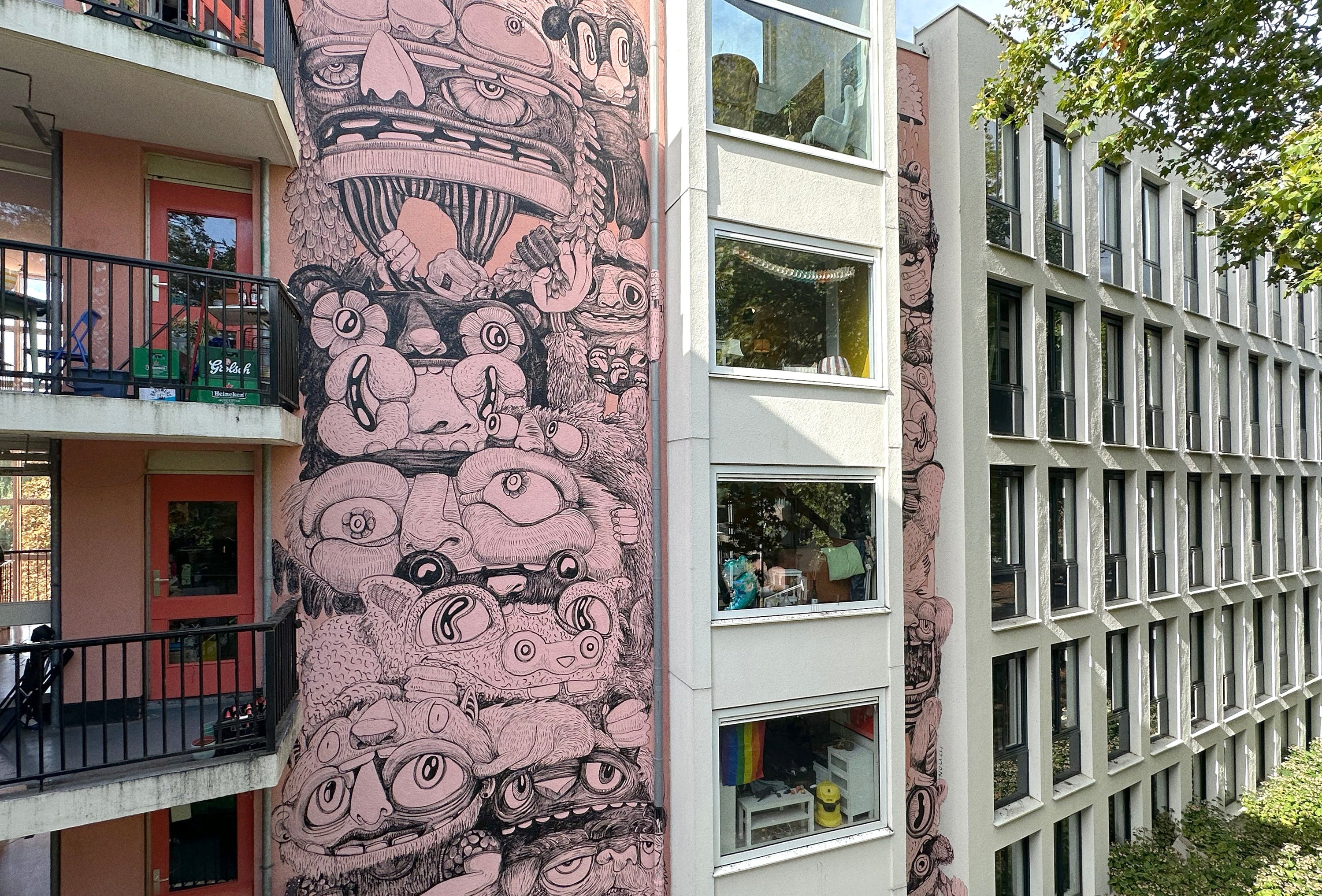
The Silence After Color: When Pink Dream Had to Disappear
I was walking along Kattenburg, near the Bijltjespad, the other day, and my heart sank when I saw the empty wall. That wall had been a living work of art— Pink Dream , by Nouch, an artist I collaborate with, respect, admire, and enjoy watching grow. But now most of that work is gone. Due to protests from local residents, it was decided that the mural would have to be painted over again after less than a month.
What struck me about it? Not just the loss of paint, color, and charisma, but the loss of courage. Of a voice, of a perspective, of someone who wants to create art in public spaces. Nouch had permission from the municipality, the housing association Lieven de Key, and the student complex. It wasn't just a scribble, but a commission through Centrum Begroot.
Yet it was clear: residents across from the apartment building felt uninformed. They found the color, shape, or visibility disturbing. The chair of the Groot Kattenburg committee cited procedural errors. They argued that there should have been more consultation with all immediate neighbors.
I understand such concerns. Living in a neighborhood means you're influenced by your surroundings. Views, light, atmosphere: those things matter to people. But there's something unfair about how quickly, how rigorously, the response was. Six weeks of preparation, a lot of work, and then, in one decision, almost everything gone. Nouch herself acknowledges that her input beforehand was inadequate. She says, "Okay, I made a mistake." But she wonders: does that justify losing so much work?
What does this mean for artists? For public spaces? For those seeking color, diversity, something out of the ordinary? To me, it means we've become afraid. Afraid that someone thinks something doesn't "belong" within view of windows, afraid that residents will object, and that decision-makers would rather withdraw than take a stand for what art can be.
I work with Nouch. I see her experimenting, searching, her ideas becoming increasingly sharper. In Pink Dream, I saw something beautiful: not just in terms of imagery, but in her courage, in terms of what it can mean to be visible in a neighborhood, to add color to someone's daily life. Yes, she could have communicated better. Yes, the process could have been more streamlined. But the overriding decision, "get rid of it," feels like a missed opportunity.
Perhaps it's time to ask: what do we want as a city? Only art that doesn't bother anyone, that respects everyone's taste, that stays within strictly defined boundaries? Or do we also give artists the space to seek intersections, offer contrasts, and raise questions?
I'm on Nouch's side. Not blindly, but with conviction. I want us to dare to acknowledge that mistakes can be made in the run-up, but that doesn't mean we should immediately sweep everything away. That we recognize the value of the artist's voice, the impact of what becomes visible in public spaces.
Let Pink Dream be a wake-up call. For policymakers, for the neighborhood, for everyone who believes in art as something that moves, challenges, and connects. Let us work together to find ways to ensure that artists like Nouch feel free to create, knowing they have support—not just applauding when something is considered beautiful, but supporting when something is shocking, when it evokes contradiction.